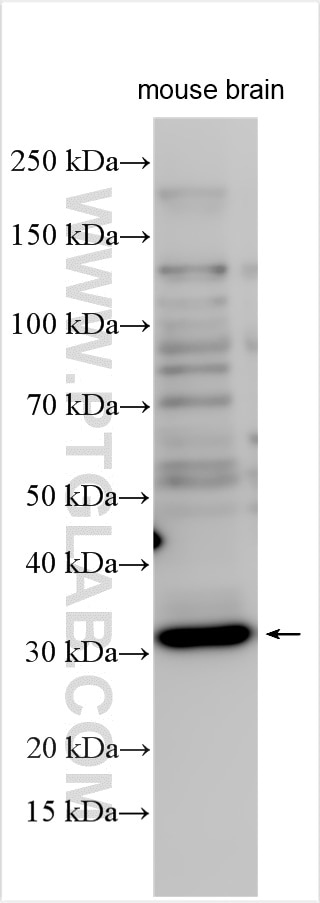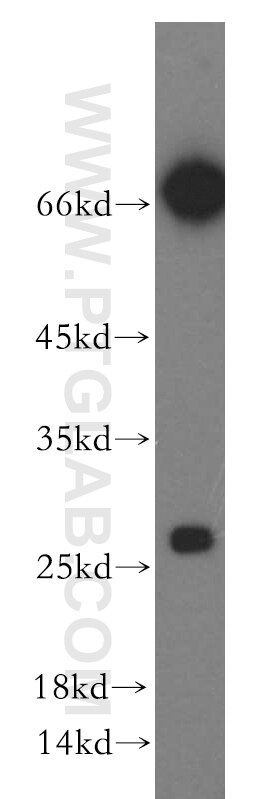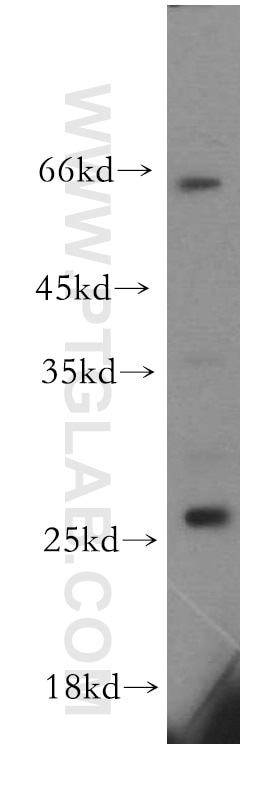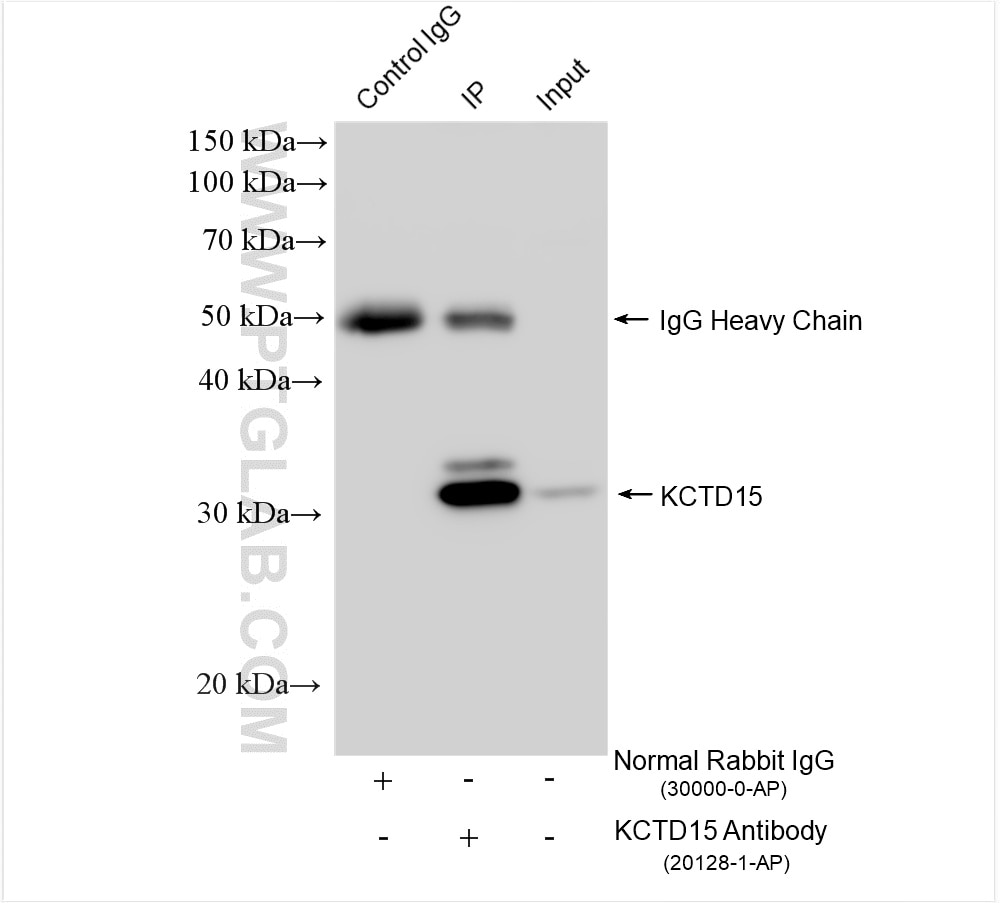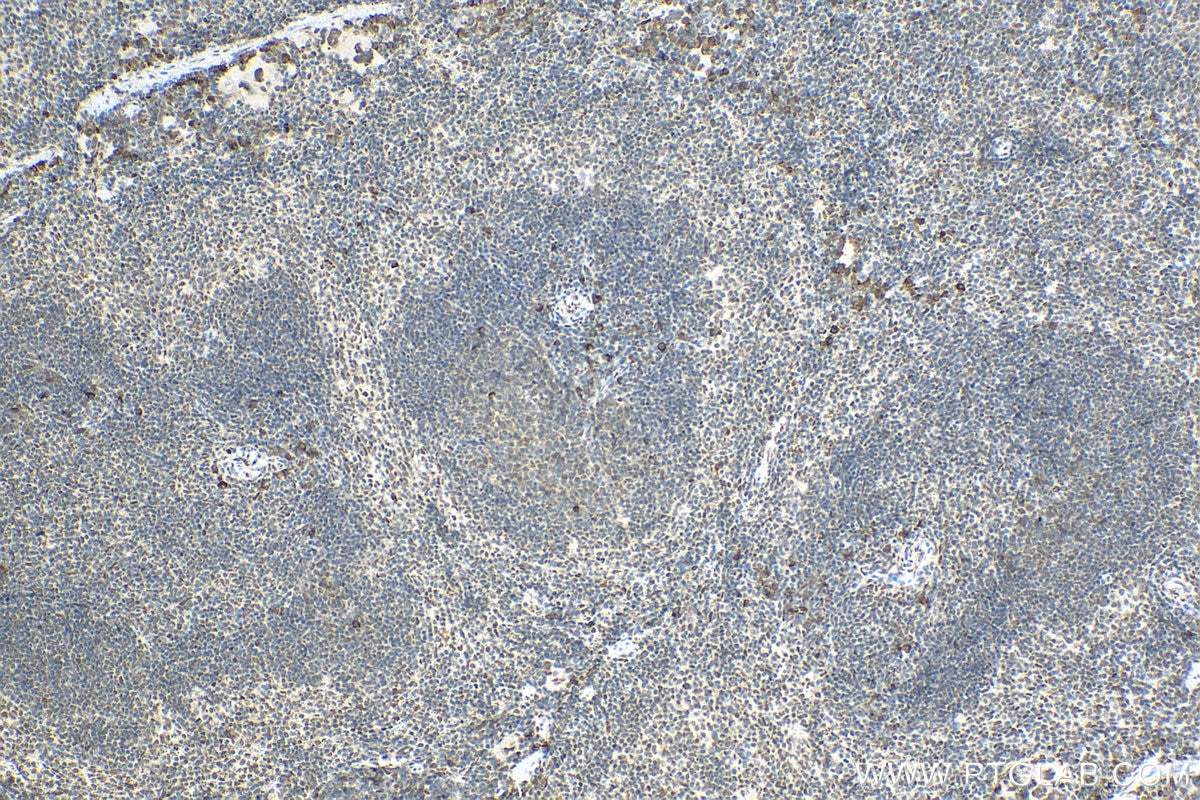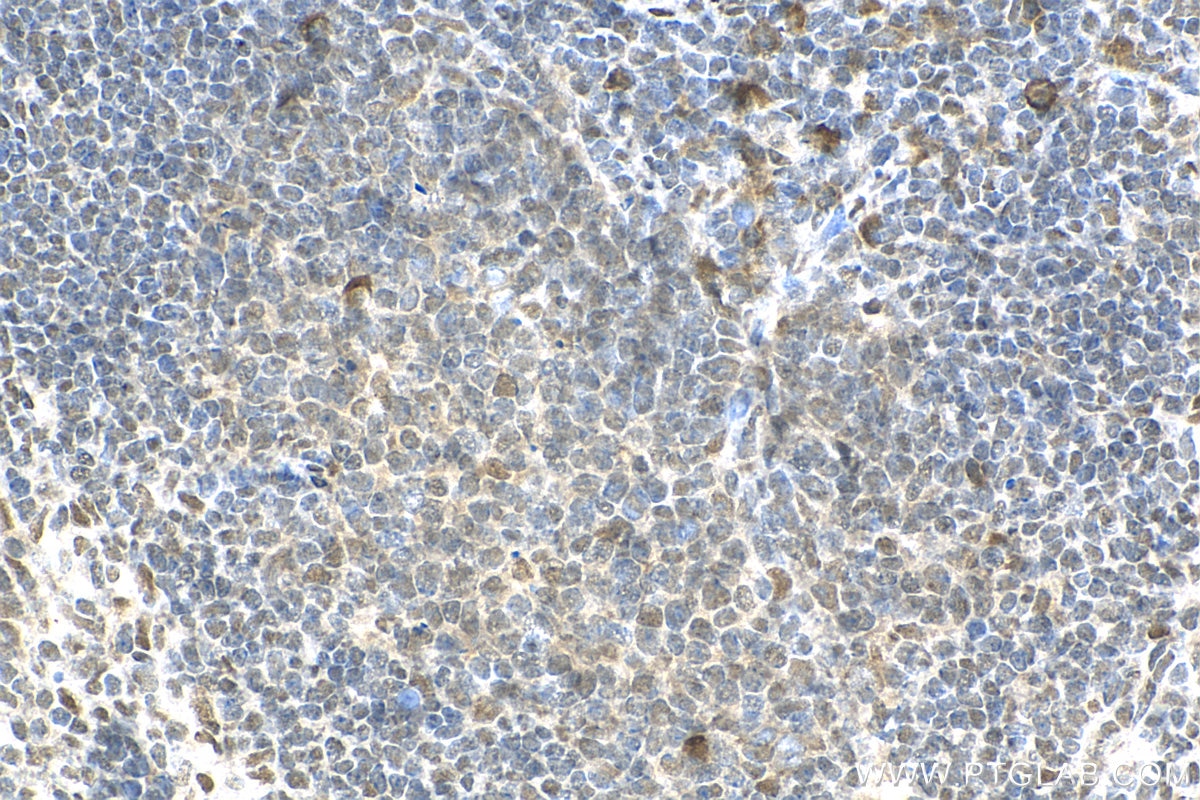Validation Data Gallery
Tested Applications
| Positive WB detected in | mouse brain tissue, C6 cells, HEK-293 cells, mouse lung tissue |
| Positive IP detected in | C6 cells |
| Positive IHC detected in | mouse spleen tissue Note: suggested antigen retrieval with TE buffer pH 9.0; (*) Alternatively, antigen retrieval may be performed with citrate buffer pH 6.0 |
Recommended dilution
| Application | Dilution |
|---|---|
| Western Blot (WB) | WB : 1:500-1:1000 |
| Immunoprecipitation (IP) | IP : 0.5-4.0 ug for 1.0-3.0 mg of total protein lysate |
| Immunohistochemistry (IHC) | IHC : 1:50-1:500 |
| It is recommended that this reagent should be titrated in each testing system to obtain optimal results. | |
| Sample-dependent, Check data in validation data gallery. | |
Published Applications
| KD/KO | See 1 publications below |
| WB | See 1 publications below |
Product Information
20128-1-AP targets KCTD15 in WB, IHC, IP, ELISA applications and shows reactivity with human, mouse, rat samples.
| Tested Reactivity | human, mouse, rat |
| Cited Reactivity | human |
| Host / Isotype | Rabbit / IgG |
| Class | Polyclonal |
| Type | Antibody |
| Immunogen |
CatNo: Ag13962 Product name: Recombinant human KCTD15 protein Source: e coli.-derived, PET28a Tag: 6*His Domain: 1-234 aa of BC001185 Sequence: MPHRKERPSGSSLHTHGSTGTAEGGNMSRLSLTRSPVSPLAAQGIPLPAQLTKSNAPVHIDVGSHMYTSSLATLTKYPDSRISRLFNGTEPIVLDSLKQHYFIDRDGEIFRYVLSFLRTSKLLLPDDFKDFSLLYEEARYYQLQPMVRELERWQQEQEQRRRSRACDCLVVRVTPDLGERIALSGEKALIEEVFPETGDVMCNSVNAGWNQDPTHVIRFPLNGYCRLNSVQDVL 相同性解析による交差性が予測される生物種 |
| Full Name | potassium channel tetramerisation domain containing 15 |
| Calculated molecular weight | 283 aa, 32 kDa |
| Observed molecular weight | 26 kDa |
| GenBank accession number | BC001185 |
| Gene Symbol | KCTD15 |
| Gene ID (NCBI) | 79047 |
| RRID | AB_10646430 |
| Conjugate | Unconjugated |
| Form | |
| Form | Liquid |
| Purification Method | Antigen affinity purification |
| UNIPROT ID | Q96SI1 |
| Storage Buffer | PBS with 0.02% sodium azide and 50% glycerol{{ptg:BufferTemp}}7.3 |
| Storage Conditions | Store at -20°C. Stable for one year after shipment. Aliquoting is unnecessary for -20oC storage. |
Background Information
KCTD15 is a member of the KCTD family of proteins, which are involved in various biological processes. KCTD15 plays a role in embryonic development by regulating the neural crest domain. It inhibits neural crest induction by repressing the Wnt/β-catenin signaling pathway. KCTD15 is involved in the NF-κB signaling pathway, which is crucial for immune responses and inflammation. Its deregulation can influence the activation of the IKK-β enzyme complex, triggering the NF-κB pathway. KCTD15's expression levels in peripheral blood cells and leukemia cells suggest its potential as a biomarker for diagnosing and monitoring acute leukemias. Its distinct expression profile in different types of white blood cells highlights its importance in both physiological and pathological processes.
Protocols
| Product Specific Protocols | |
|---|---|
| IHC protocol for KCTD15 antibody 20128-1-AP | Download protocol |
| IP protocol for KCTD15 antibody 20128-1-AP | Download protocol |
| WB protocol for KCTD15 antibody 20128-1-AP | Download protocol |
| Standard Protocols | |
|---|---|
| Click here to view our Standard Protocols |
Publications
| Species | Application | Title |
|---|---|---|
Oncogenesis KCTD15 inhibits the Hedgehog pathway in Medulloblastoma cells by increasing protein levels of the oncosuppressor KCASH2.
| ||
Proc Natl Acad Sci U S A KCTD1 regulation of Adenylyl cyclase type 5 adjusts striatal cAMP signaling |

